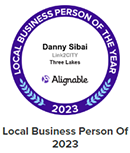Integrating Sustainability into Your Digital Marketing Strategy
Sustainability has ceased to be mere jargon in current business scenario. It has evolved into an essential aspect of corporate social responsibility. With consumers gradually becoming conscious about the environment, businesses ought to incorporate sustainability in all their operations such as digital marketing. This contributes to worldwide attempts to lessen on environmental issues and corresponds with increasing numbers of people who appreciate green habits.
In this article we will investigate how one can effectively introduce sustainability in their digital marketing plan for the purpose of improving the image of the brand and creating a more sustainable world.
Why Sustainability Matters in Digital Marketing Today
Digital marketing that is sustainable does not only focus on minimizing carbon emissions, but it is also about creating a name that represents contemporary customers’ values. According to a Nielsen report, 73% of worldwide consumers would positively or likely alter their shopping behaviors so as to lessen their impact on nature. This data highlights why integrating marketing actions with environmental-friendly ways is essential.
When you integrate Sustainability into your digital marketing strategy, you gain the ability to:
- Improve brand image: Displaying your commitment to Sustainability can enhance your brand’s image help pull in eco-friendly consumers.
- Boosting Customer Loyalty: Sustainability focused brands tend to attract more customers, thanks to this aspect of consumer preferences.
- In a competitive market, sustainable practices can distinguish your brand and lead to business growth over the long term.
Incorporating sustainability in your digital marketing strategy is a major step.
1. How to Conduct a Sustainability Audit for Digital Marketing
Before integrating sustainability into digital marketing strategy, it is important to analyze current practices. A sustainability audit identifies aspects of digital marketing efforts that may result in environmental damage.
Aspects that Need Assessment:
- Energy Use: Investigate the energy use of your web-site, servers as well as E-marketing instruments.
- Content Production: Examine the effects of producing content like videos, images, and written materials on the environment.
- Do you know what carbon emissions are produced when running your online ads programmatically?
Considering the carbon emissions of your website entails looking into these kinds of data. It is important that your digital marketing requirements are consistent with the sustainability goals that are established from what you find about these emissions.
2. Optimize Your Website for Sustainability
Your site serves as the bedrock for your digital marketing plan, while optimization for Sustainability can greatly reduce its ecological footprint. An energy conserving and user-centric site is described as sustainable, thus enhancing overall satisfaction by users.
Website Practices for Sustainability:
- Slow page load times can be reduced by compressing images, minimizing coding and using effective hosting services that would save on both energy consumption and loading time.
- Hosting with environment in mind: Select a web host providing utilized renewable energy sources to run its servers.
- Minimalist Design: By adopting a minimalist design, you will lessen the requirement for extensive files and intricate programming resulting to lesser energy consumption on your site.
Attractive hint: Live your website performance and sustainability audit very often, so that changes at every stage of digital marketing promotion can be in no way destructive for its optimization.
3. Strategies to Create Eco-Friendly Content in Digital Marketing
Digital marketing relies heavily on contents, which are essentials for survival. As such eco-friendly writing can help enhance your sustainability objectives. The term “eco-friendly content” signifies not just the exchange of ideas, but also methods of production and dissemination.
Getting Content Written in an-Eco-Friendly Way:
- Content Duplication: Instead of always creating new content, idea of recycling existing material across different platforms. It cuts down the resource usage for producing content.
- Digital-Only Strategies: Concentrate on digital inputs rather than hard-copy which need tangible resources and create rubbish.
- Sustainability must be promoted: Impart knowledge to your target market by means of your content about sustainability and motivate them to incorporate environmental friendly habits.
Valuable Advice: Create a plan for online text material that emphasizes excellence rather than excess, with an intention of making powerful articles or passages that are not seriously damaging to our ecosystem.
4. How to Leverage Green Digital Advertising for Sustainability
Digital advertising has become an integral component in every marketing strategy yet still has a profound impact on our surroundings. For instance, programmatic advertisements consume considerable power to be handled and sent. So as to ensure that your digital advertising remains eco-conscious below are some of the things you could do:
Sustainable Advertising Practices:
- Mode of advertising that focus on certain group of consumers so they can get advertisements hence save more money by not wasting money on those who are not connected with the product or service being offered.
- Eco-Friendly Channels: Collaborate with advertising platforms that place sustainability and transparency at the forefront of their business practices.
- Compensate for Carbon Effects: Weighing up whether to compensate for the carbon impacts elaborated through your digital advertising campaigns via carbon offset programs.
Get on board: Make use of carbon emission meters to track how your online ads affect climate change and for the purpose of reducing your carbon emissions.
5. Engage in Green Partnerships
When you work together with organizations that have similar thoughts, this makes your work for sustainability bigger. When you partner with green companies or non-profits or even individuals known for promoting environmental issues, this will make sure that your reach is wider and that the eco-friendly message from the existing brand is kept intact.
There are several advantages of Green Partnerships:
- By aligning with partners who have the same sustainability objectives as you do, you can increase your brand’s credibility and widen its appeal.
- There are chances for cross-promotion through green partnerships, enabling you to access fresh demographics that cherish Sustainability.
- Collaborative initiatives such as sustainability campaigns or eco-friendly product launches can generate positive PR and engage people.
Practical Advice: Recognize possible eco-friendly associates and investigate chances of cooperation that correspond to your online advertisement objectives and sustainable intentions.
6. Measure and Report on Your Sustainability Efforts
Using transparency makes it possible for you to develop trust within your audience. Regularly measuring and reporting on FTW sustainability efforts shows that you are committed to continuous improvement and accountability.
Conclusion
Integrating sustainability into one’s digital marketing strategy is no longer just an option; it has become the need of the hour especially because people are now very much concerned about the environment. You can achieve this by optimizing the performance of the site, producing content with less carbon footprint, using advertisements that have been designed with green conceptions and forming strategic alliances with agencies which practice sustainability. This way, there is reduced environmental Impact while at the same time enhancing brand recognition. As consumers become more environmentally-conscious, companies who commit themselves to remain eco-friendly will distinguish themselves in a competitive industry resulting into long-term success.
In these days of modern online marketing, the first thing that should always come into one’s mind is sustainability. Not only does this assist in achieving set goals for your business, but it also has an overall positive effect on the environment.





























